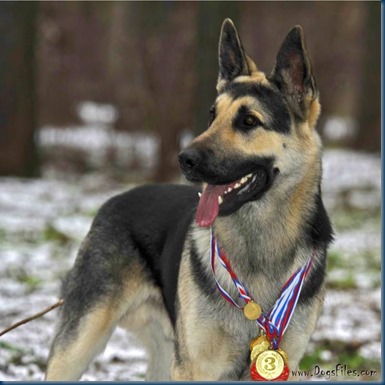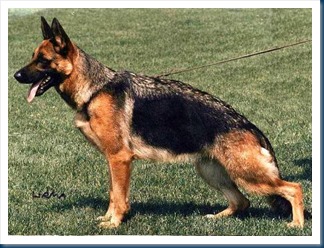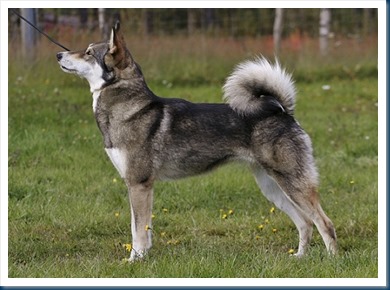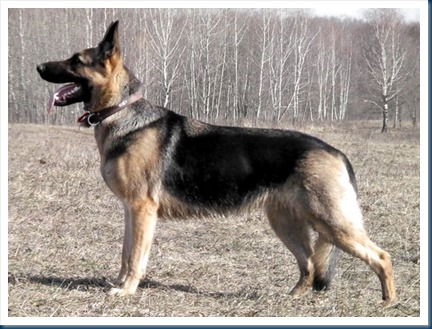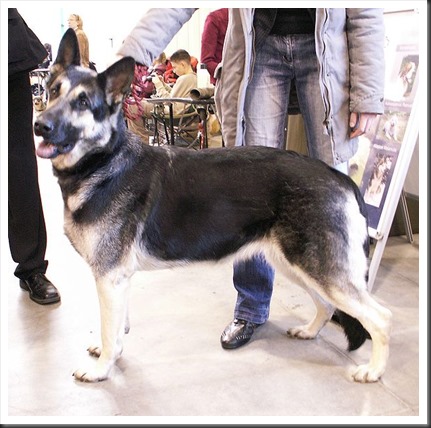Russian German Shepherd Dogs
One-Man Guard Dogs Who Will Defend You To The Bitter End!
ONE MAN DOG:
Combining the temperament of the German Shepherd Dog and Laika dog breed types, the Russian GSDs form an intensely close, loyal and devoted bond with their owners, rendering them nearly impossible to re-home. They are TOTALLY SINGLE-PERSON DOGS, even if they have been brought up in a family home, attaching to one person only TO THE EXCLUSION OF ALL OTHERS, and making ABSOLUTELY NO EXCEPTIONS whatsoever for ANY other family member. It is not at all unusual for it to COMPLETELY IGNORE any commands given by anyone who is not its alpha owner, creating difficulties in a family situation.
If they do show any sign of friendliness towards new people in the lives of their alpha owner eg marriage partner, it can take an exceptionally long time and it is NOT IN ANY WAY GUARANTEED, no matter how many years they have shared living with that person that this will happen.
CHILDREN:
This Russian GSD DOES NOT EASILY BECOME ATTACHED TO CHILDREN – unless the child is its alpha owner, and is OFTEN VERY INTOLERANT of them. Unlike most dogs if it does play with children it will be just as rough as it would be with adults. It will also WASTE NO TIME ABOUT SNAPPING AT THEM IF IT FEELS THEY ARE PUSHING ITS LIMITS TOO FAR such as if they play too roughly for the Russian GSD’s liking – a point of particular and serious concern to parents.
EXERCISE:
As with the German Shepherd Dog the East-European Shepherd is bred to have pretty much ENDLESS SUPPLIES OF ENERGY and it can happily work for many hours without any need for a break. WITHOUT WORK eg herding, competitive obedience, or agility it will quickly become deeply unhappy and develop behaviour problems. Ideally it will be given SEVERAL HOURS DAILY of mentally stimulating pursuits and dynamic physical exercise. These dogs are TOTALLY UNSUITABLE for apartment life and need to be in a home which can offer VERY substantial, expansive gardens.
HEALTH ISSUES:
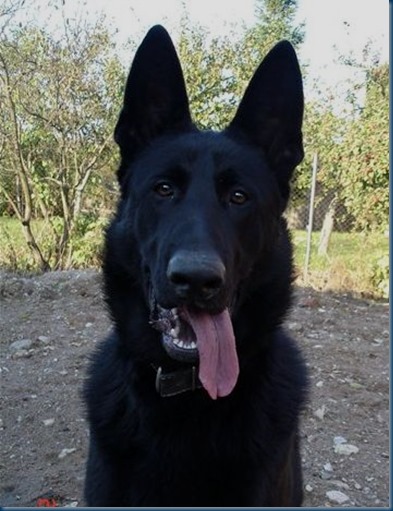 The East-European Shepherd has a broader gene pool than the majority of other purebred dogs, and with its status as almost exclusively a working dog when compared to other modern pure-bred dogs, is typically considered to be very healthy.
The East-European Shepherd has a broader gene pool than the majority of other purebred dogs, and with its status as almost exclusively a working dog when compared to other modern pure-bred dogs, is typically considered to be very healthy.
Whilst it DOES experience genetically inherited health issues, just like any other dog they tend to be FEWER AND FARTHER BETWEEN its equals of other breeds.
MOULTING
Bred to withstand the extreme climates of Russia and surrounding areas the Russian German Shepherd Dog can live just as happily outside as inside. Indeed OUTSIDE may prove preferable for more house-proud owners! IT SHEDS HAIR ALL THE YEAR ROUND, very effectively smothering carpets, furnishings and clothing ON A FULL-TIME, ON-GOING BASIS. However when the seasonal shedding takes place and the undercoat is replaced, SHEDDING IS TAKEN TO AN UNPRECEDENTED LEVEL of intensity! A very powerful vacuum cleaner is a must with these dogs!!
GUARD DOG:
 Bite first, ask questions later dogs, Russian GSD s are well known for their practically silent operating status; it is very rare that they bark; and for their EXTREMELY ALERT AND HIGHLY PROTECTIVE instincts. However, these dogs make excellent guard dogs that will unhesitatingly DEFEND THEIR TERRITORY TO THE DEATH.
Bite first, ask questions later dogs, Russian GSD s are well known for their practically silent operating status; it is very rare that they bark; and for their EXTREMELY ALERT AND HIGHLY PROTECTIVE instincts. However, these dogs make excellent guard dogs that will unhesitatingly DEFEND THEIR TERRITORY TO THE DEATH.
Weighing in at around 100 lbs (70-130 lbs for both sexes) the Russian GSD is a formidable and extraordinarily powerful dog; (males stand at 26-30 inches, females- 24-28 inches) and is a dog intensely and ferociously determined to protect its owner from harm AT ALL COSTS. The prospects of survival for a would-be attacker are NOT good!!
The Russian German Shepherd is also known as: East-European Shepherd, Byelorussian Shepherd, Belarusian Shepherd, Eastern European Shepherd, Byelorussian Owtcharka, Belarusian Owtcharka, East-European Owtcharka, Eastern European Owtcharka, Owczarek Wschodnioeuropejski, Vostochnoevropejskaya Ovcharka, and the VEO.
![russian shepherd com_thumb[6] russian shepherd com_thumb[6]](https://moontechk9.files.wordpress.com/2015/02/russian-shepherd-com_thumb6_thumb.jpg?w=525&h=675)
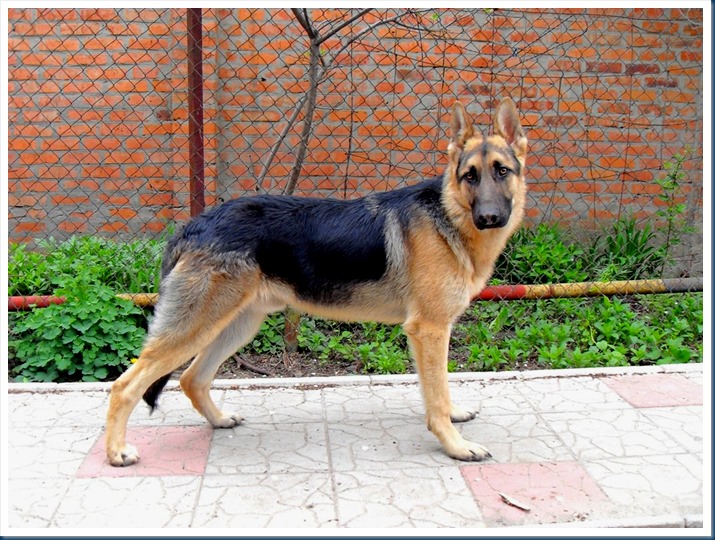
![b0737eaadd849d23adab4446f8d57855_thumb[14] b0737eaadd849d23adab4446f8d57855_thumb[14]](https://moontechk9.files.wordpress.com/2015/02/b0737eaadd849d23adab4446f8d57855_thu2_thumb.jpg?w=403&h=591)


